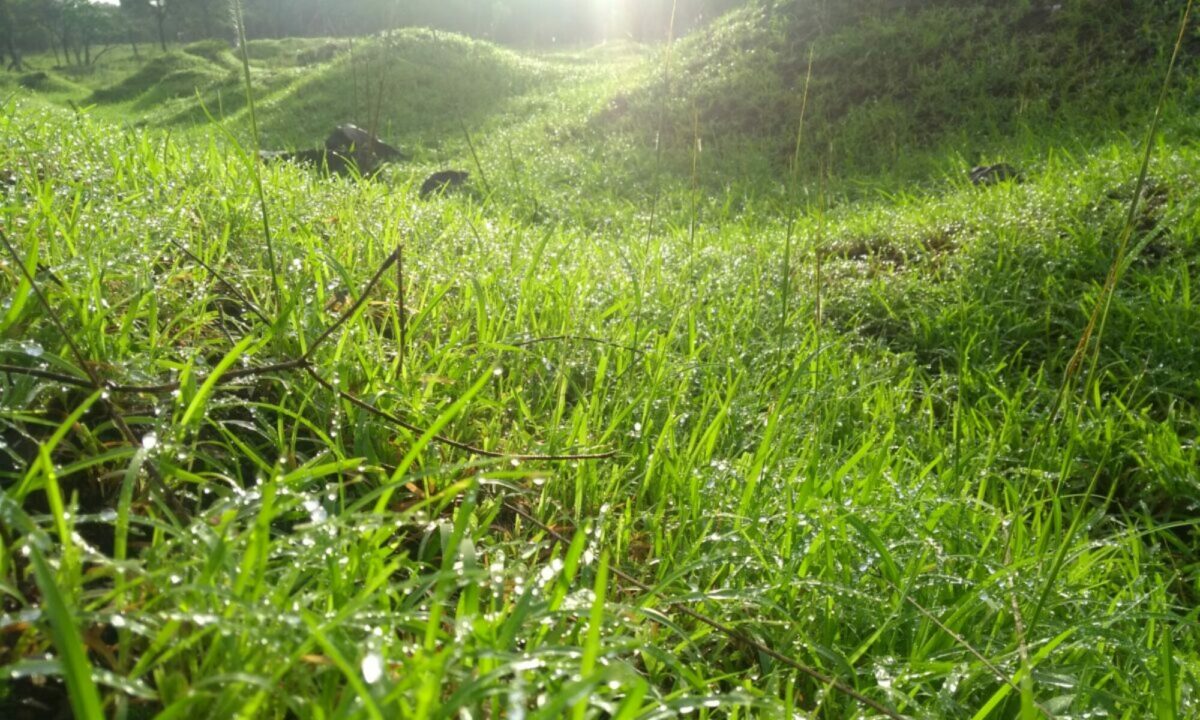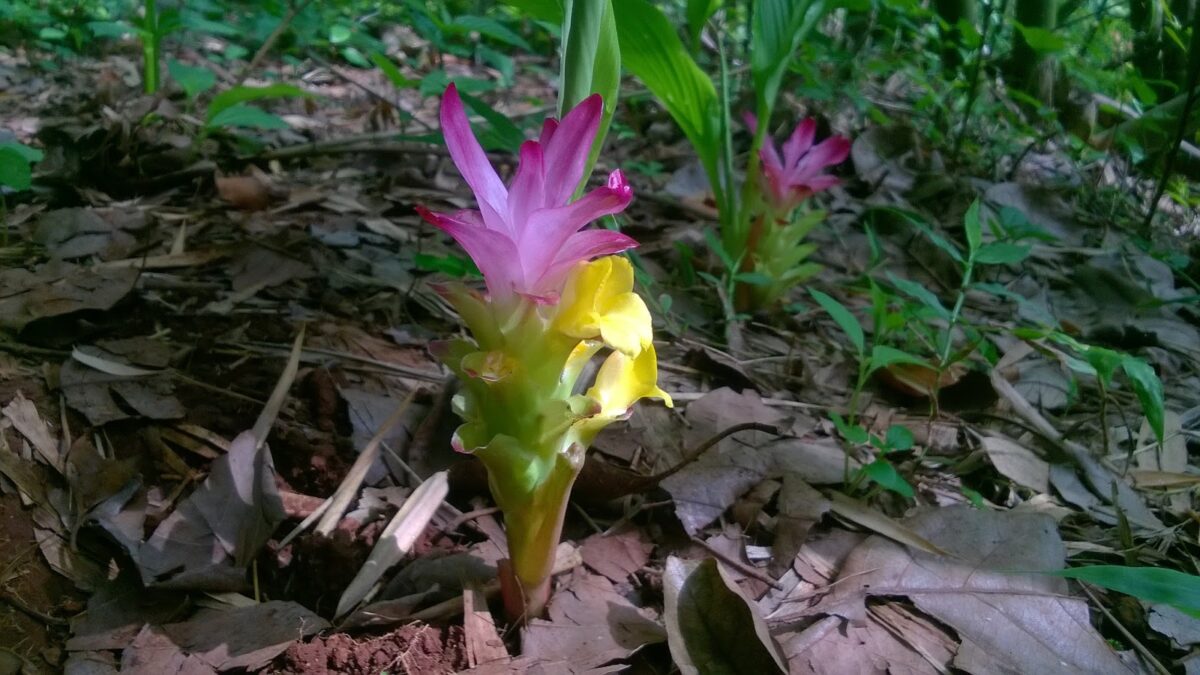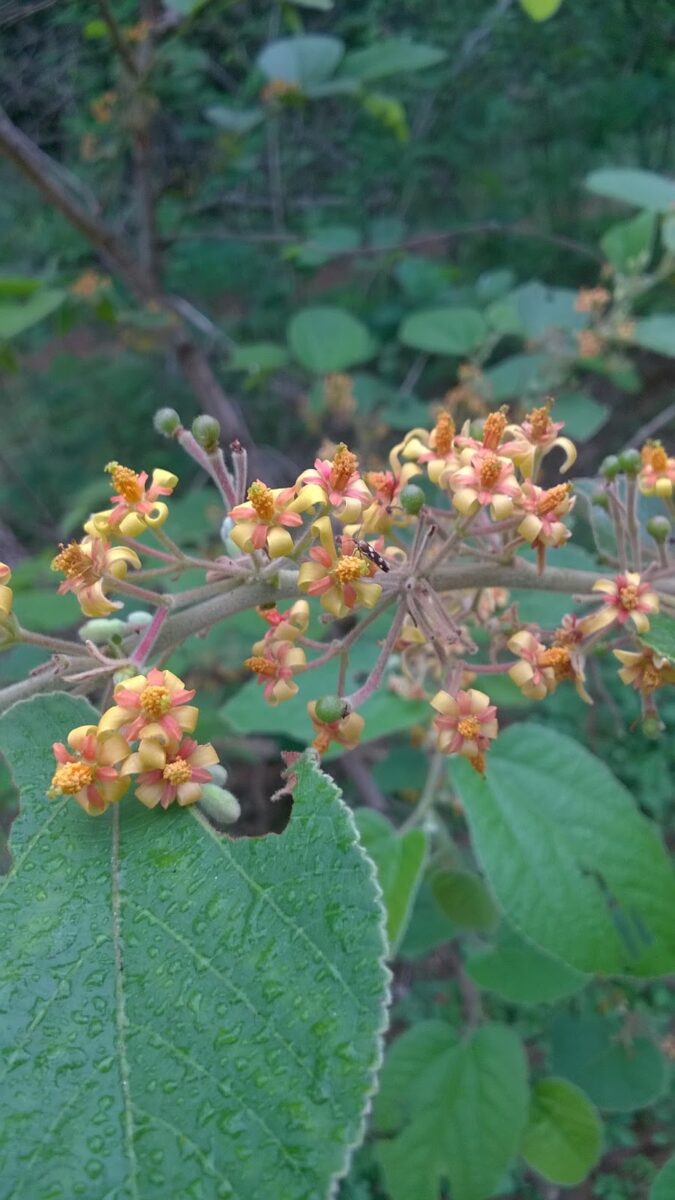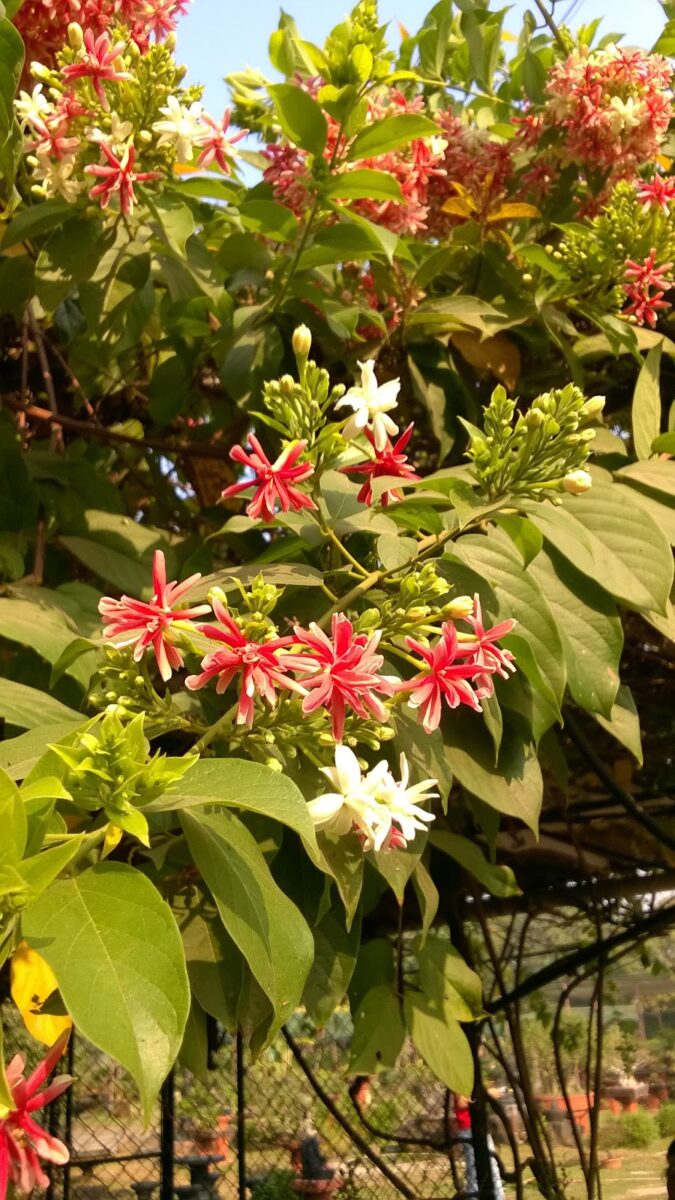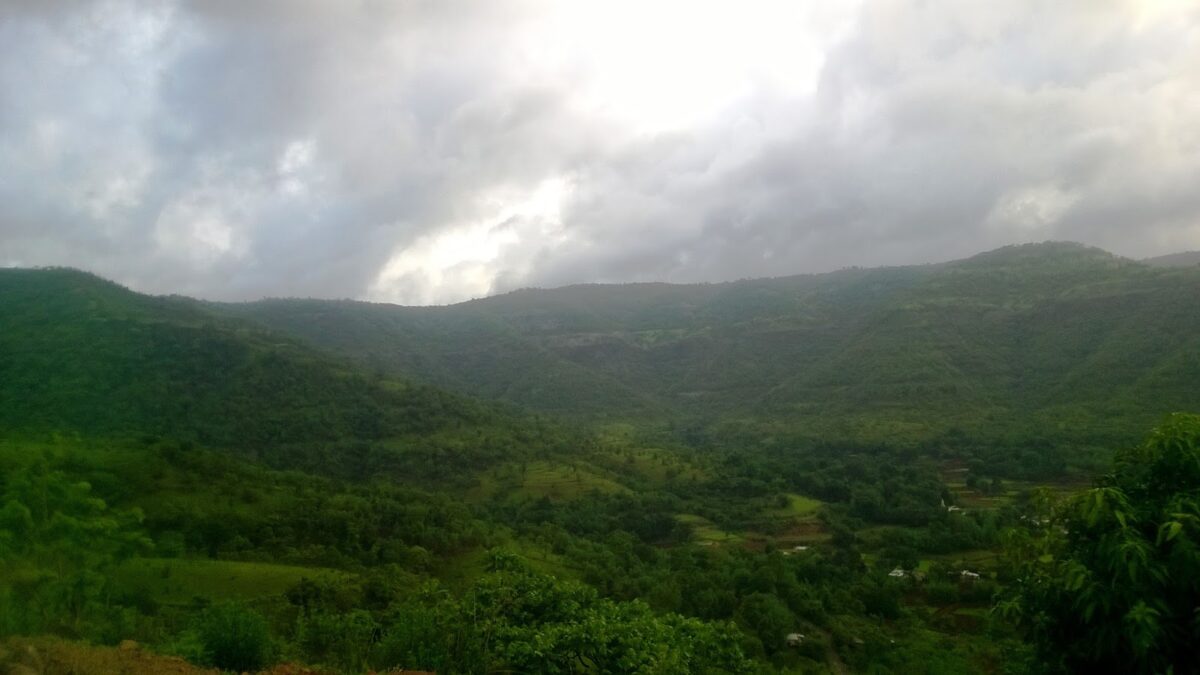 |
| The hills burst into zillion shades of green after the first monsoon rain |
Monsoon Beauty (Wordless Wednesday)
Bee (Wordless Wednesday)
Pink and White (Wordless Wednesday)
X is for eXtreme, eXcellent, eXtraordinary
These tekdis offer all of the adjectives in the title of this post:
eXtraordinary: Pune is blessed with two rivers and importantly also has many hills located right inside the city limits. They can justly be called as the lungs of the city! We have the Vetal Tekdi (which is the highest), Hanuman Tekdi (which has the Gokhale Smarak Stambh), Parvati temple which is atop the Parvati hill, the Parvati Pachgaon forest area, the Tukai Tekdi and Durga Tekdi. The changing landscape over the seasons is a visual treat!
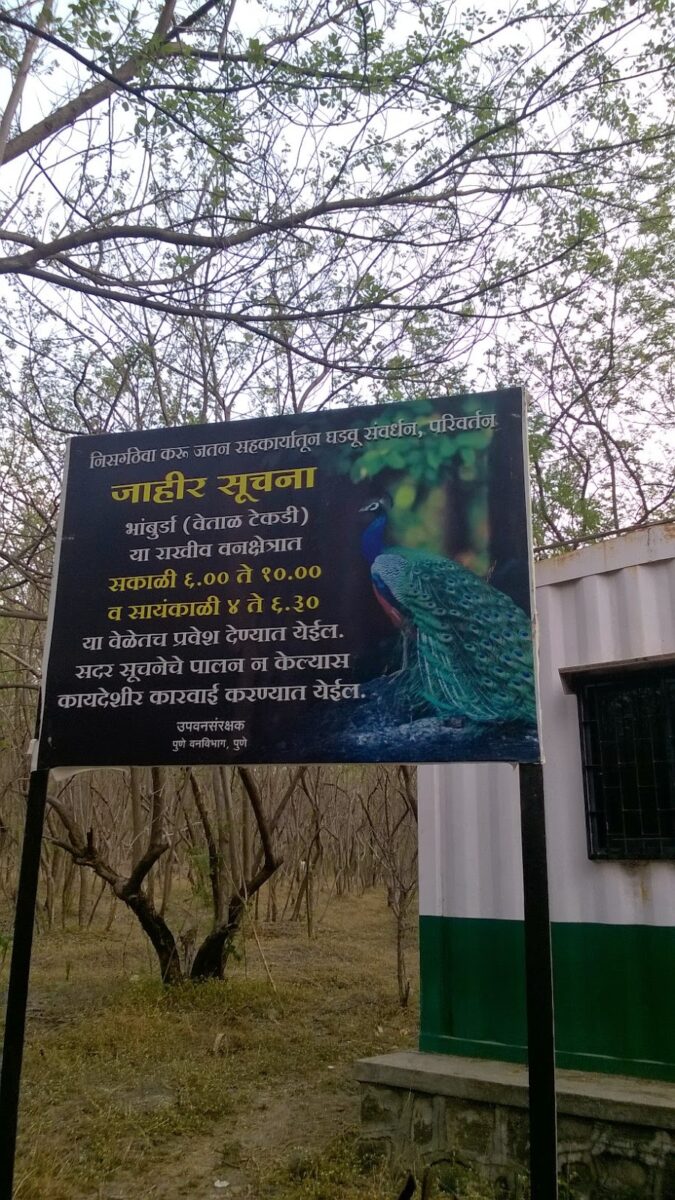 |
| Poster |
eXcellent: the hills are excellent places to exercise – for a walk, jog or even train for long treks in the Himalayas. In fact, March and April are months when one commonly sees many walking up and down the hills with huge backpacks, as they gear up for their outings in June or July… The tekdis are also home to some indigenous tree species that are either uncommon or are simply not seen in the city. Some of the trees are Ganer (Cochlospermum religiosum ), Bartondi (Morinda pubescens), Salai (Boswellia serrata), many species of the Capparis Genus. Regular walkers very commonly sight Peacocks on their morning walks on the Vetal tekdi as also a variety of birds… What bliss…
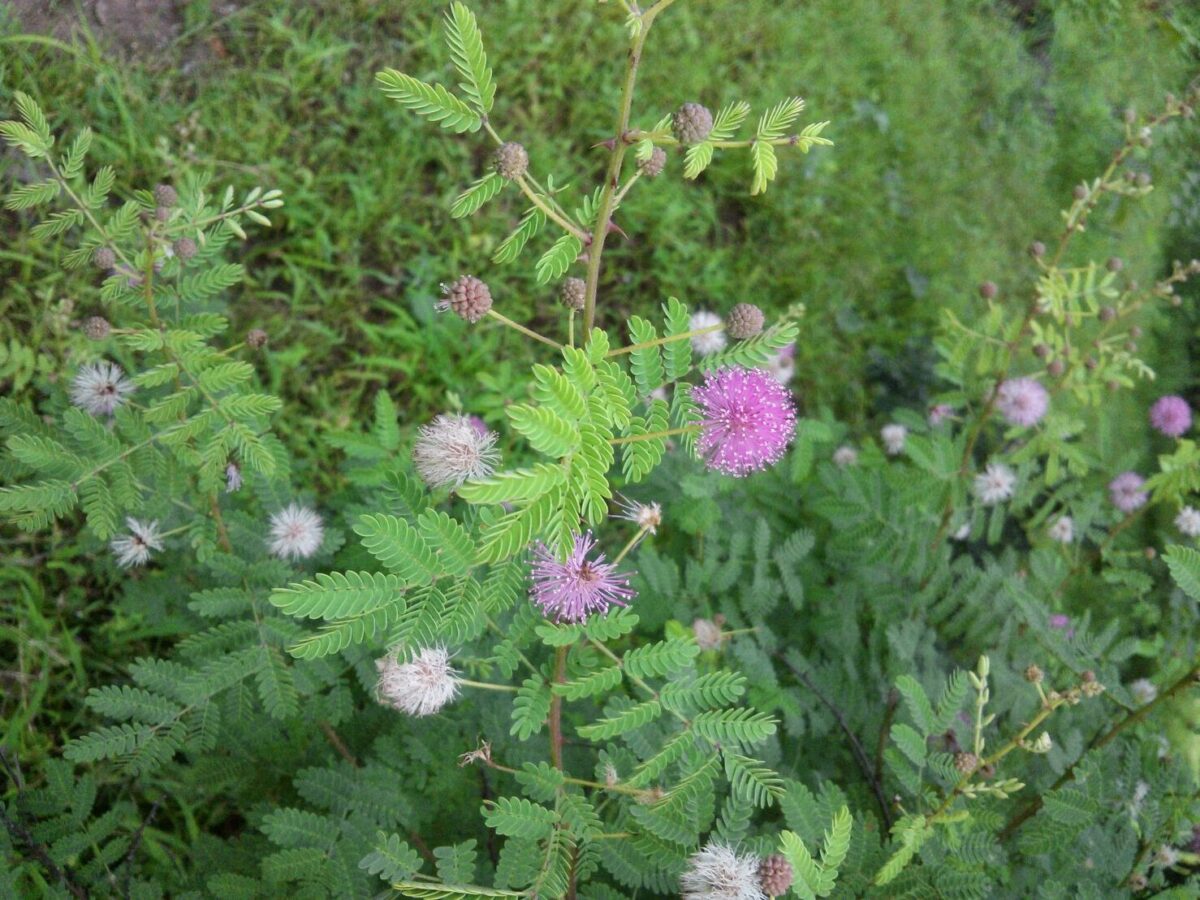 |
| Acacia sp |
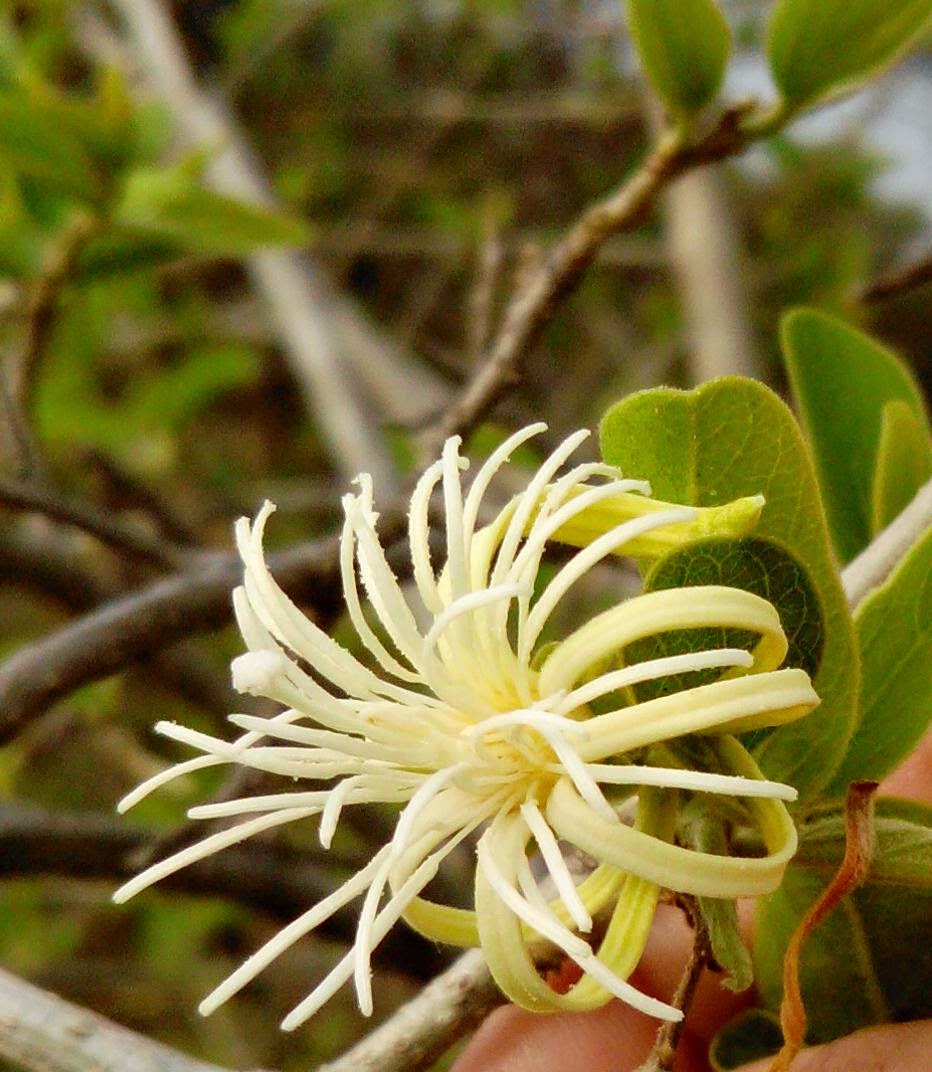 |
| Alangium salvifolium |
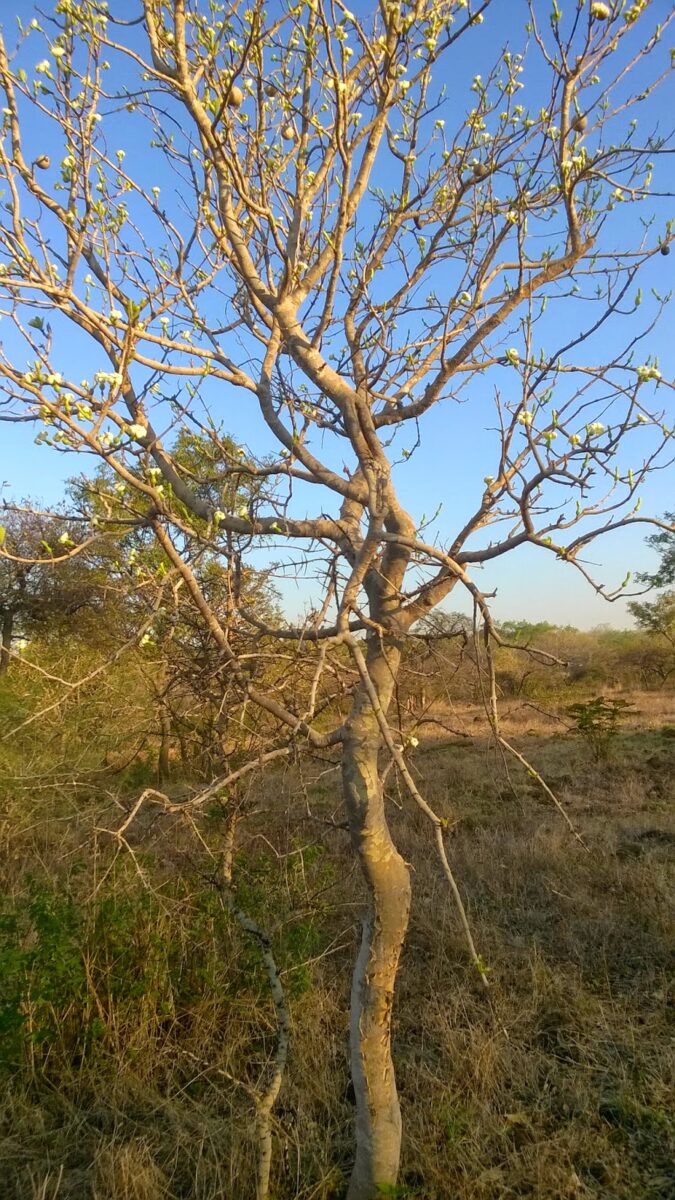 |
| Gardenia turgida |
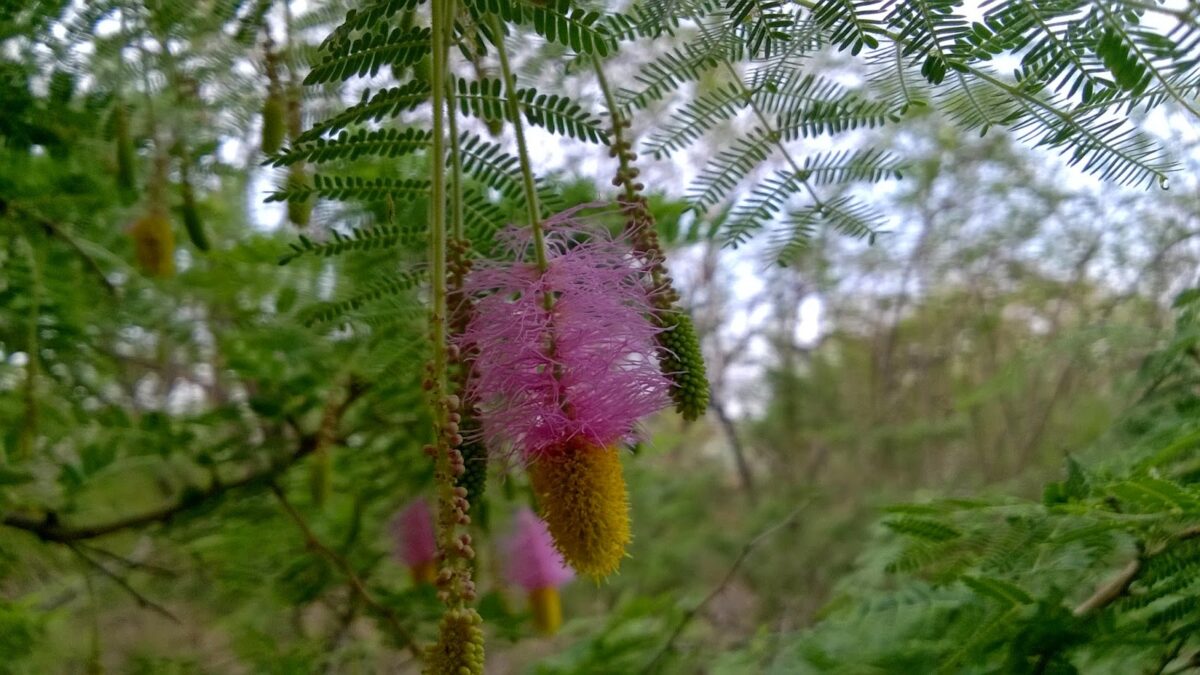 |
| Dichrostachys cinerea |
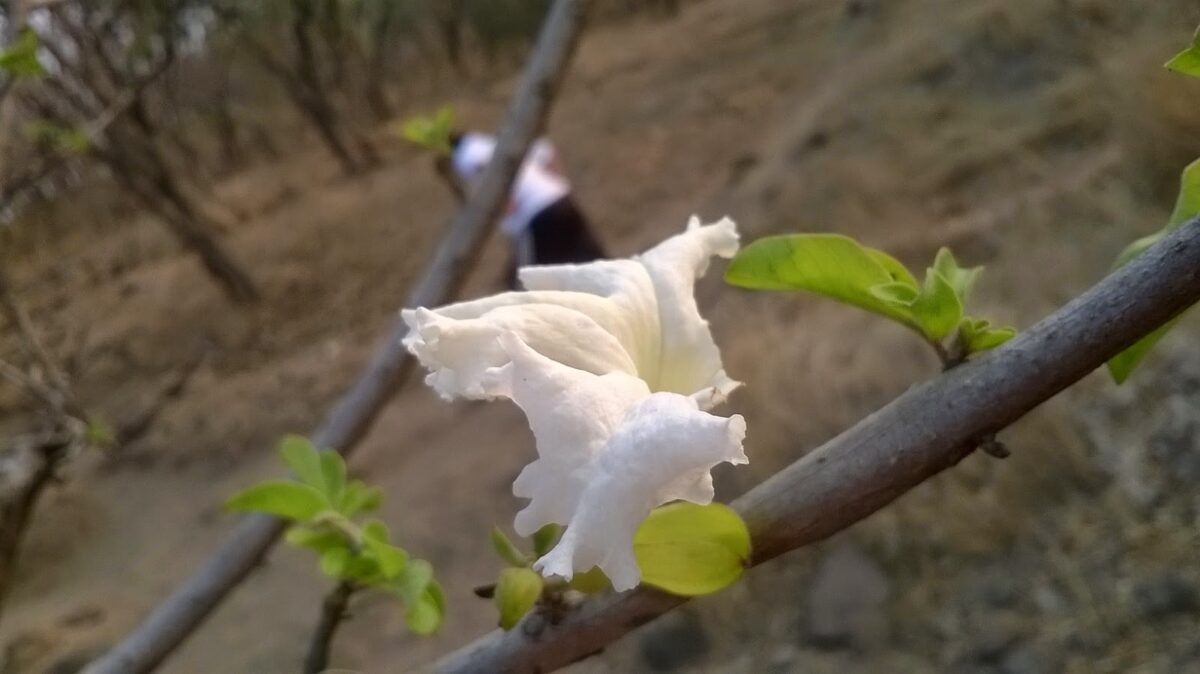 |
| Dolichondrone falcata |
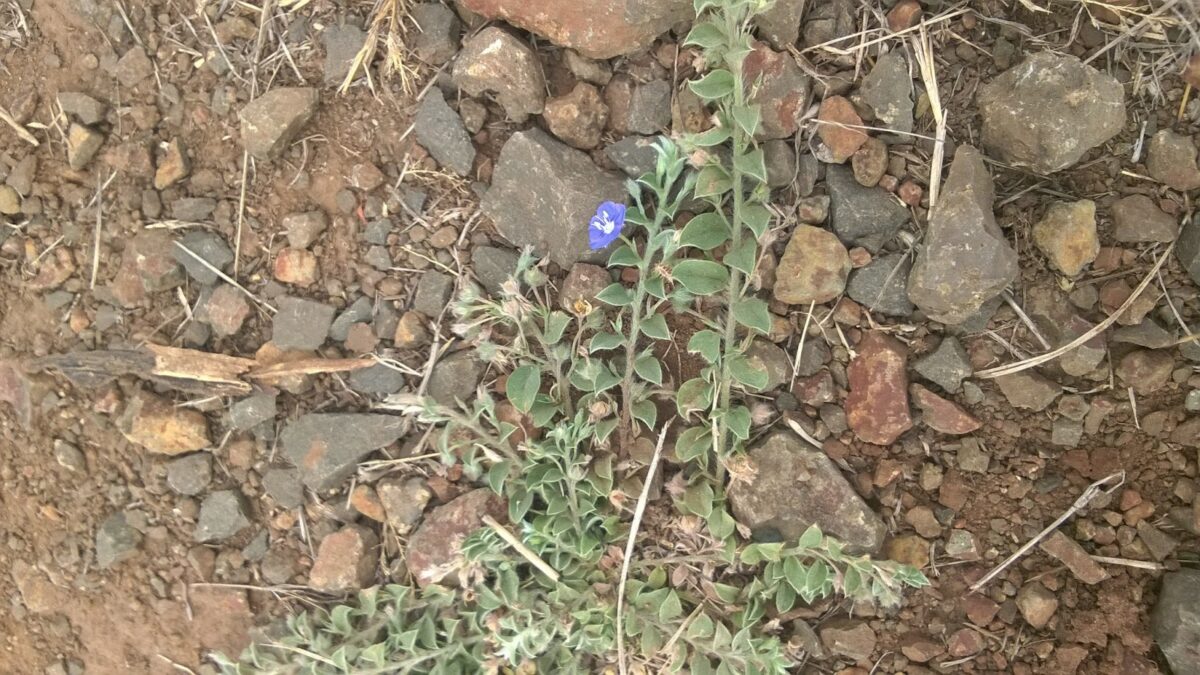 |
| Evolvulus alsinoides |
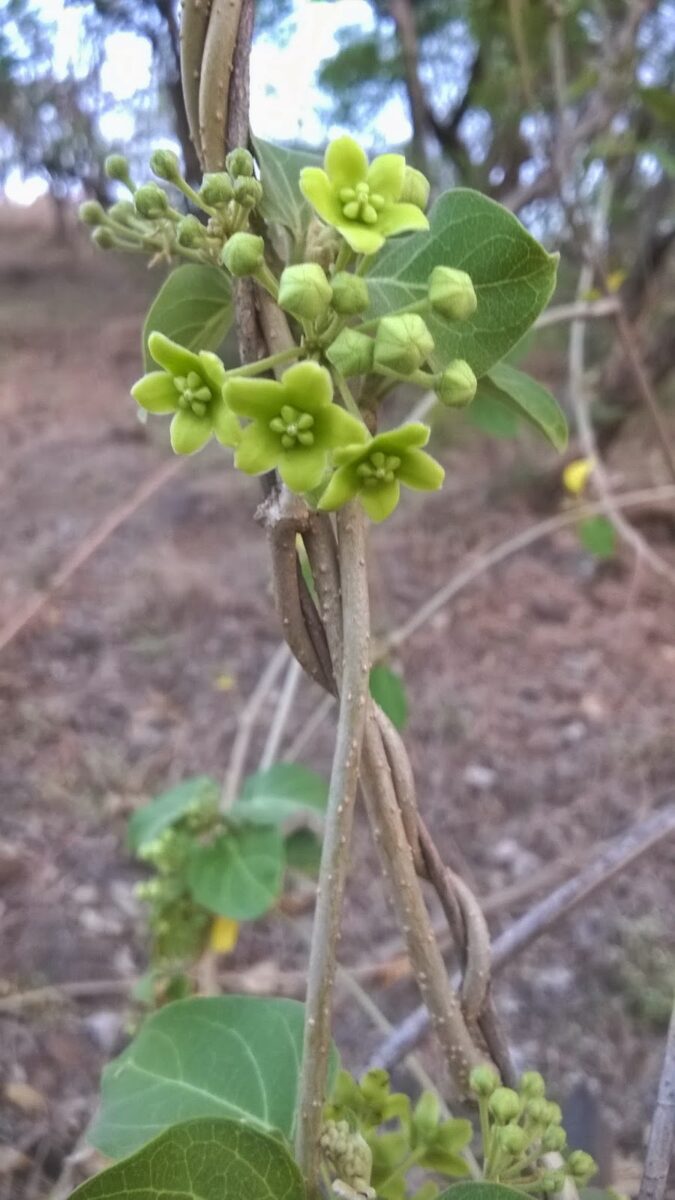 |
| Flower of Watakaka volubilis |
eXtreme: They are an example of extremes of human intervention. Some hillocks have been almost flattened as they have been razed to make way for buildings and concrete jungles all under the name of development. Simultaneously, other hills have been ‘saved’ by peoples movements and resistance to the same ‘development’. There are umpteen examples of organisations who have taken up ‘greening’ of the hills or who spend their Sunday mornings cleaning up the waste or folks who daily take up some water to water new plantations!
 |
| Morning walkers fill up such bottles and carry them up to water saplings to help them survive the harsh summer heat |
The most surprising part of these tekdis is that despite their obvious presence, a large number of people are simply unaware of this wonderful natural beauty. I know of people who have lived over five decades in Pune and still have not gone to any of the our tekdis…
The tekdis should be a must-visit place in the itinerary of every nature lover visiting Pune.
Cheers!
PS: Location Map here.
V is for Vartak Udyan
The Late Dr VD Vartak Udyan in Shaniwar Peth, Pune is located on the banks of the River Mutha. Dr Vartak was an eminent botanist whose vast body of work in the field of plant taxonomy has inspired hundreds of students. Two plant species have been named after in him, an honour which ensures we always remember his contribution. A plaque at the park entrance lists Dr Vartak’s achievements in the botanical world!
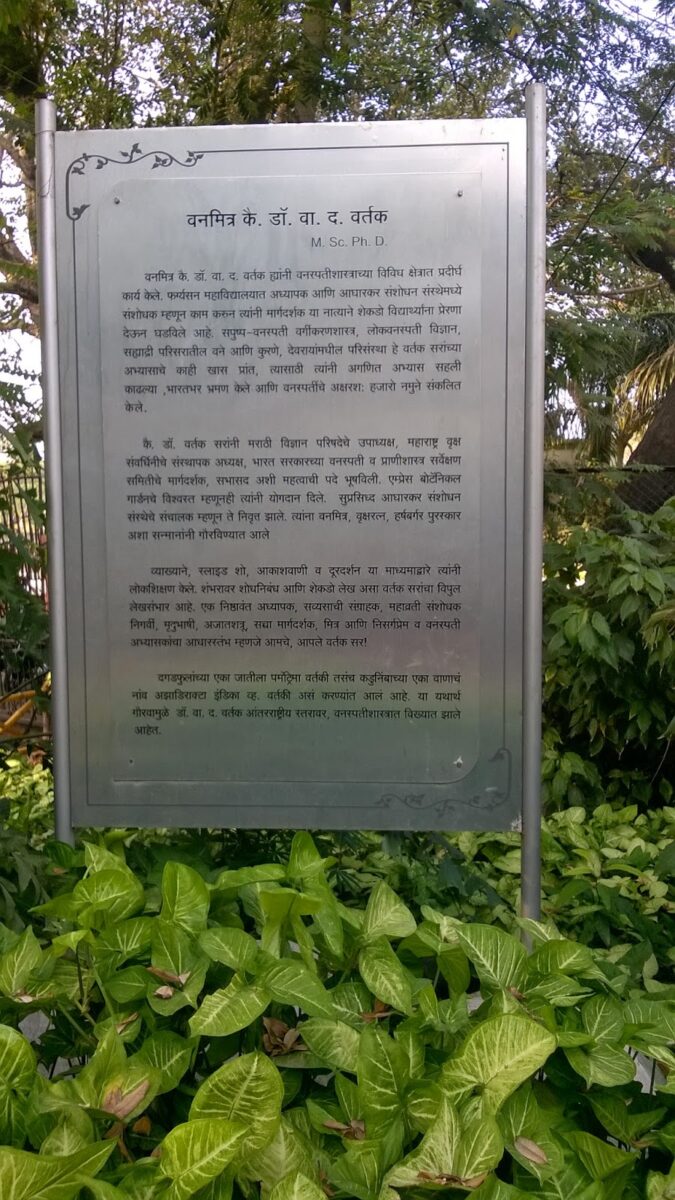 |
| Late Dr V D Vartak Udyan |
The park itself has a surprising layout and just as one thinks it is a small patch of land, a track opens up and runs along the river for some distance. Its an interesting space to enjoy the evenings. The garden has a small open air amphi theatre with a small stage and seating that overlooks the river and the Sambhaji Park on the opposite bank. This would be wonderful sight for botanical discussions or a musical program… The duranta and money plant were used to create interesting shades of green.
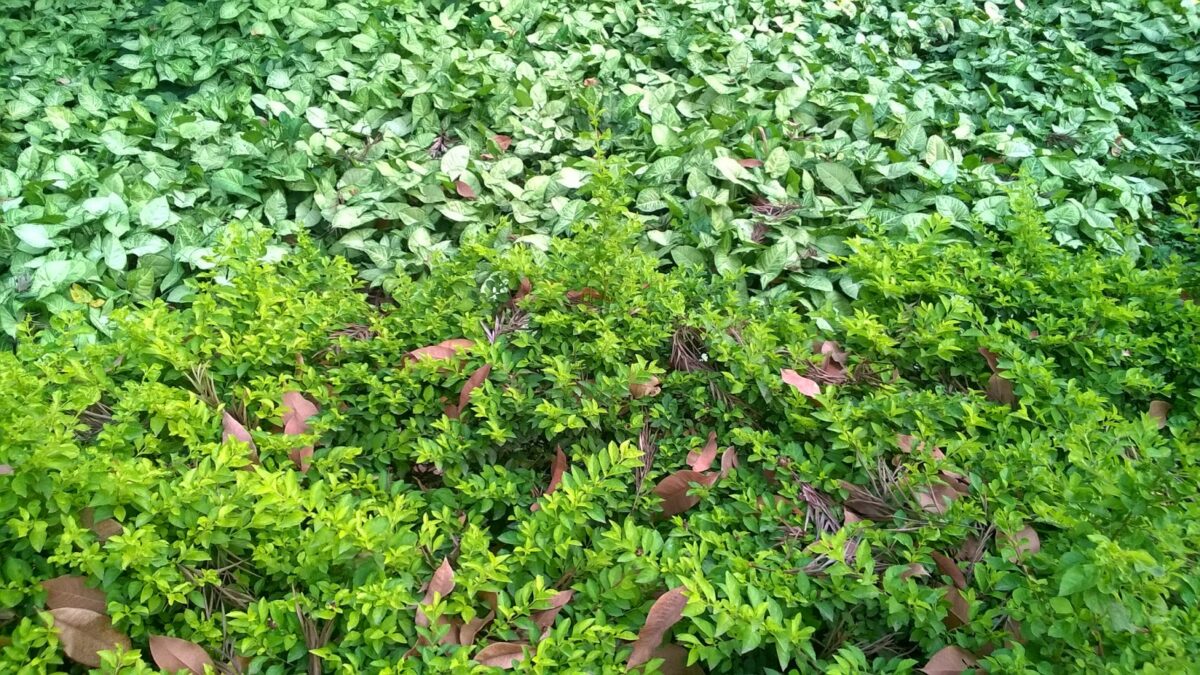 |
| Duranta and money plant carpet |
The park has a small waterfall and like the Saras Baug, this garden too had piped music!
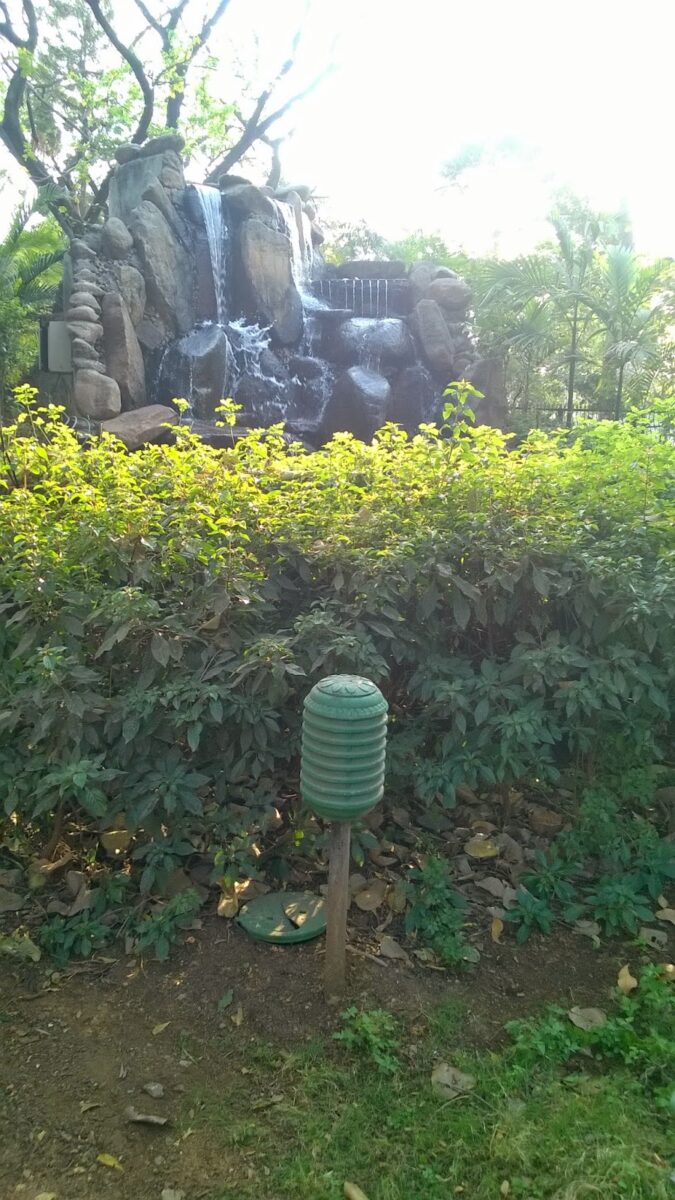 |
| Piped music for the plants |
I spotted a Neer Phanas, Bauhinia, Peepal (Ficus religiosa) and Silver Oak (Grevillea robusta) among others. Some exercise equipment has been installed here and some youth were making the most of this free opportunity to get a cardio workout!
An excellent space by the river!
Info:
Entry: Free
Timing: 6AM to 10AM and 4PM to 8PM
Drinking Water: Available
Location Map here.
O is for Osho Teerth Garden
Here is an article from The Hindu with more details about the restoration and clean up project.
Some of the old trees have been retained e.g. the superb Mahadhawda (Anogeissus pendula). We were speechless by this tree which in full bloom resembled a cascade of greenish yellow fuzzy balls.In fact the tree and hence its inflorescence was so high that it was impossible to touch the flowers, and we had to use binoculars to ‘see’ them clearly. Yet another park that does not permit photography so I cannot share the beauty that I saw….
This is a tree lovers delight with the Kailashpati (Couroupita guianensis), Beggars Bowl (Crescentia cujete), a pretty pink Azalea, Fiddle Leaf Fig (Ficus lyrata), the Vallaris heynei creeper, just to name a few..
Here are some images taken elsewhere…
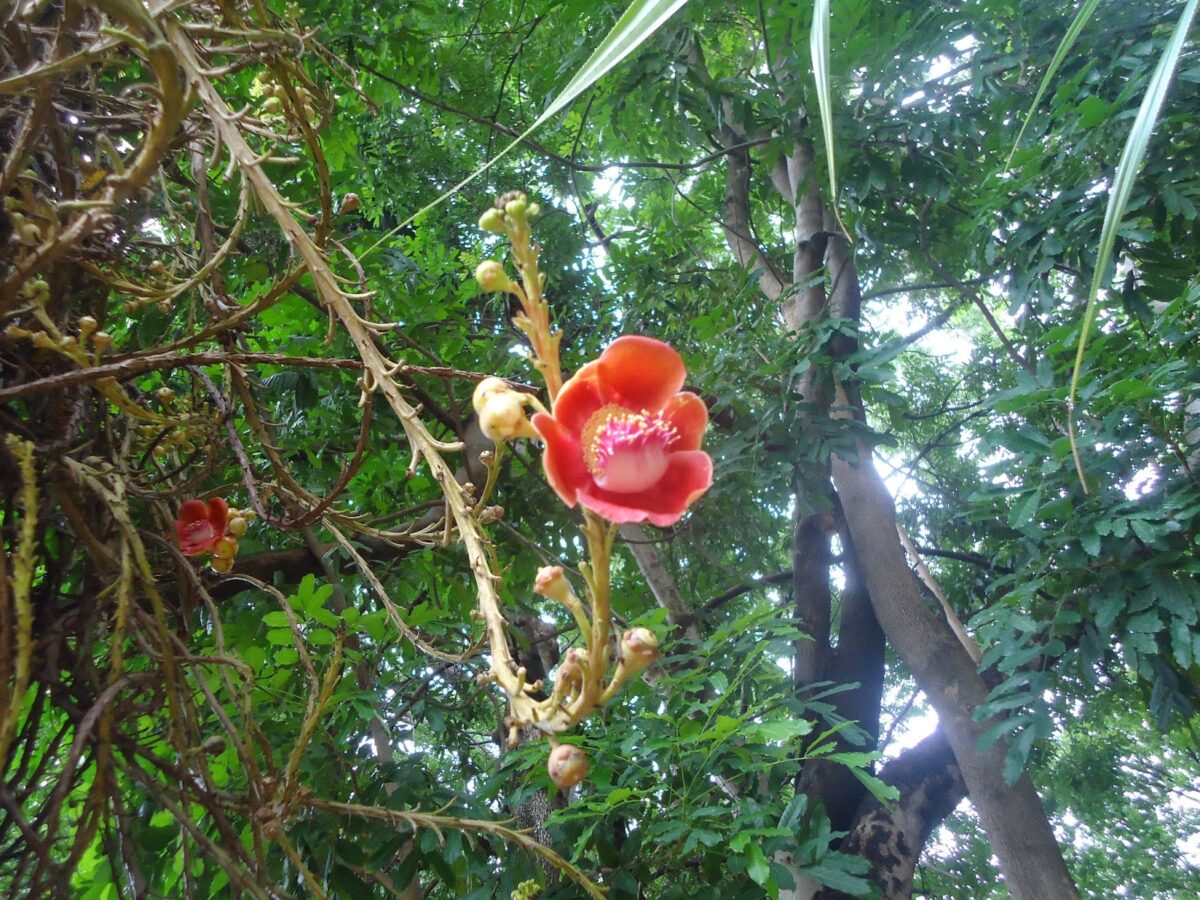 |
| Kailashpati |
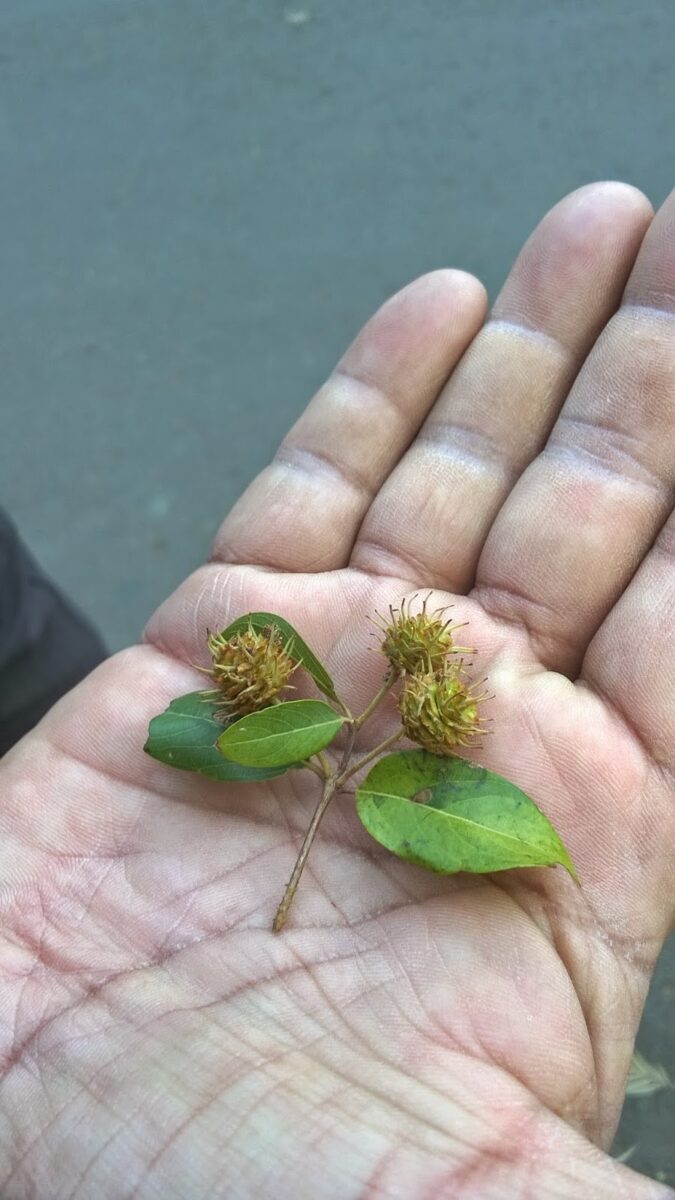 |
| Anogeissus pendula |
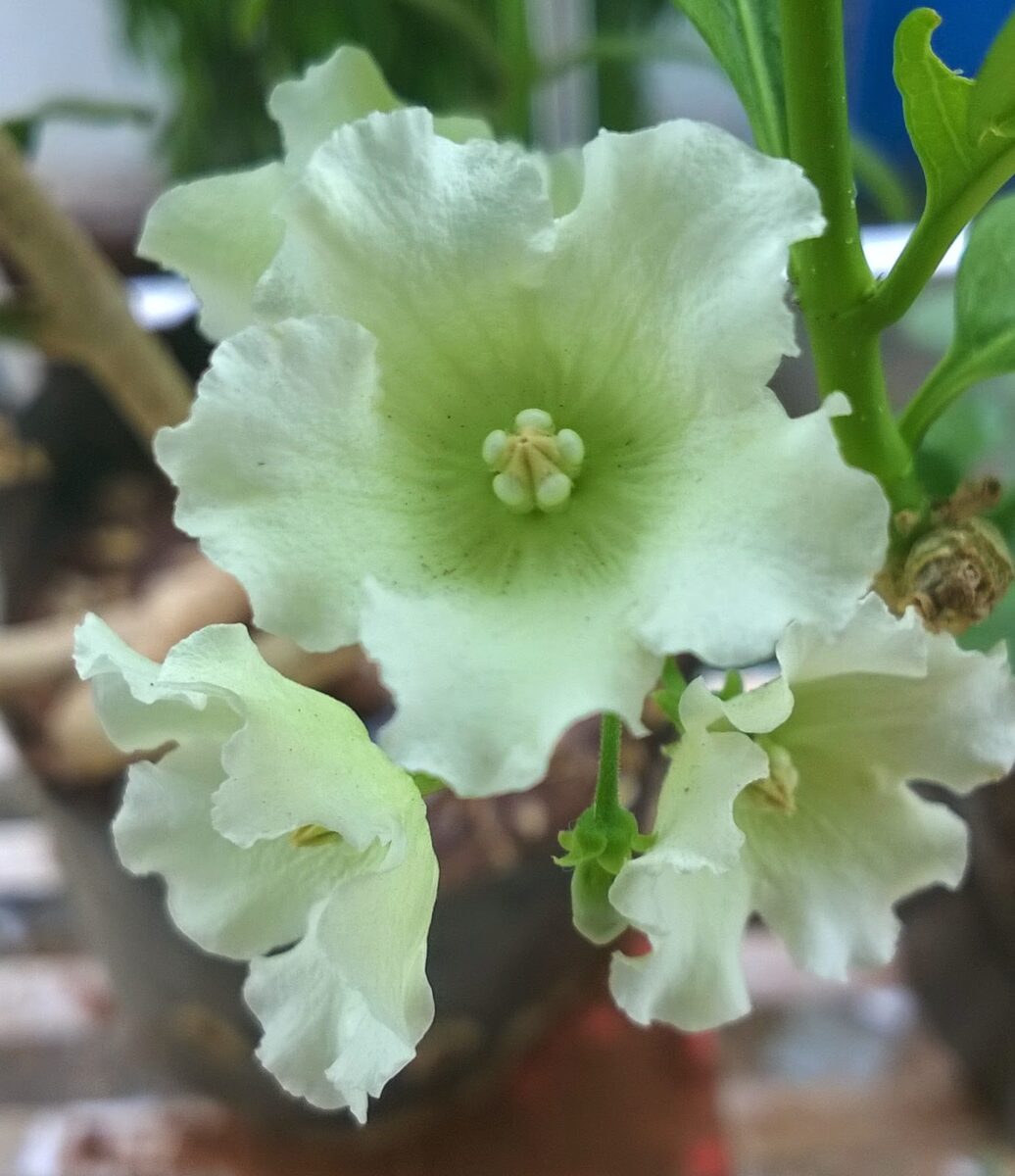 |
| Vallaris |
Children may get bored in the garden as there is no ‘play’ area. It seemed to be a popular spot among health enthusiasts in the morning hours when I visited. As I have said before, most of the parks have a different ‘flavour’ at different times of the day when the visitor demographic changes.
A wonderful park that should be on every Pune vistor’s list. Visit this link for some glimpses of the park.
Info:
Entry: Free for public in specified time
Timing: 6AM to 9AM and 3PM to 6PM
Parking: Not Permitted in the lane
Rest Rooms and Drinking water: Not available
Photography: Not permitted.
Location Map here.
Read my other posts on this theme here.
J is for JJ Garden
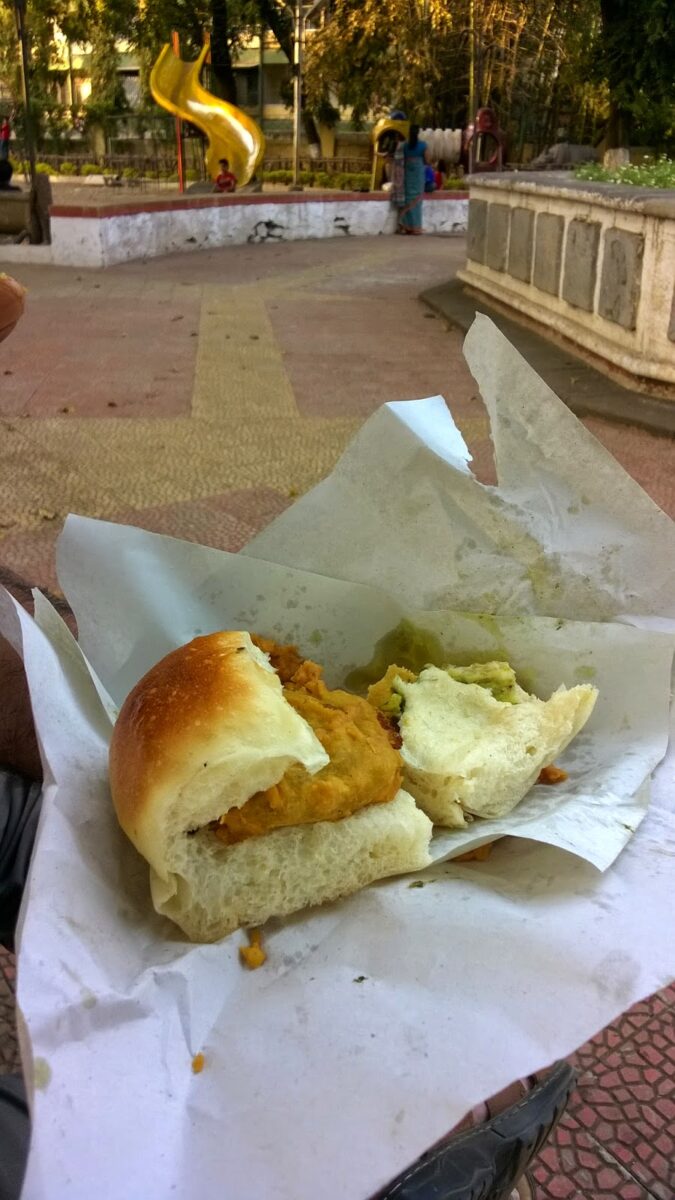
Hey, this post about gardens not food so lets enter the park. Unlike others we have visited so far on the A to Z tour, this one is managed by the Pune Cantonment Board.
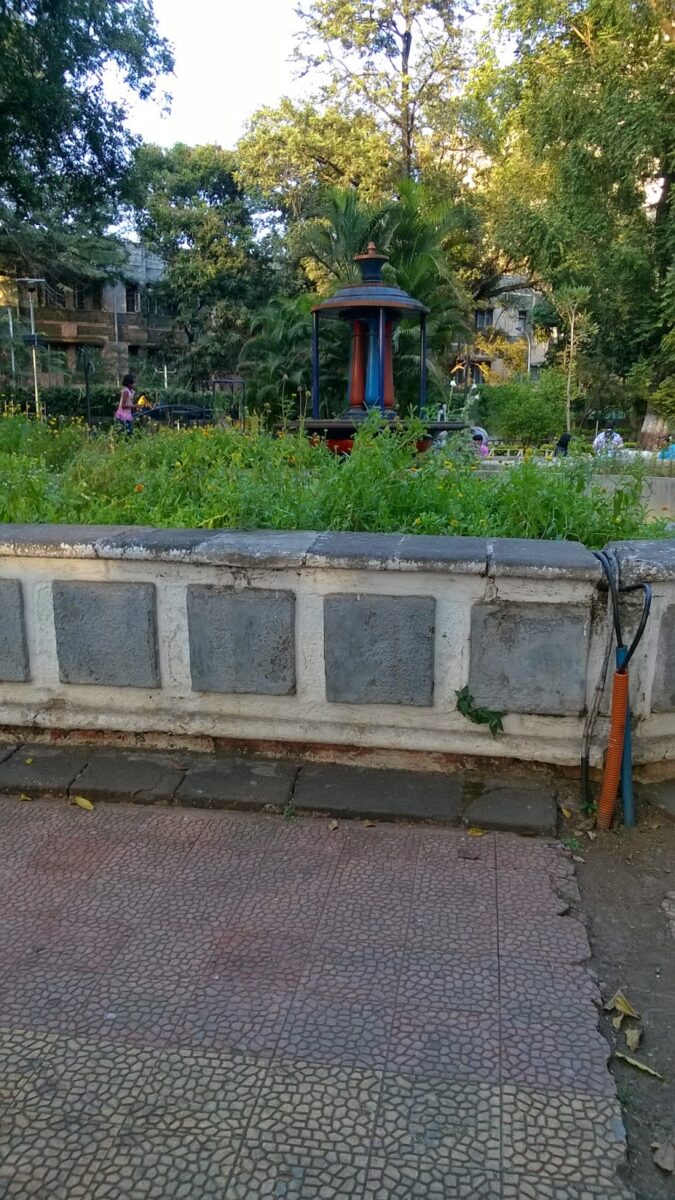 |
| Fountain |
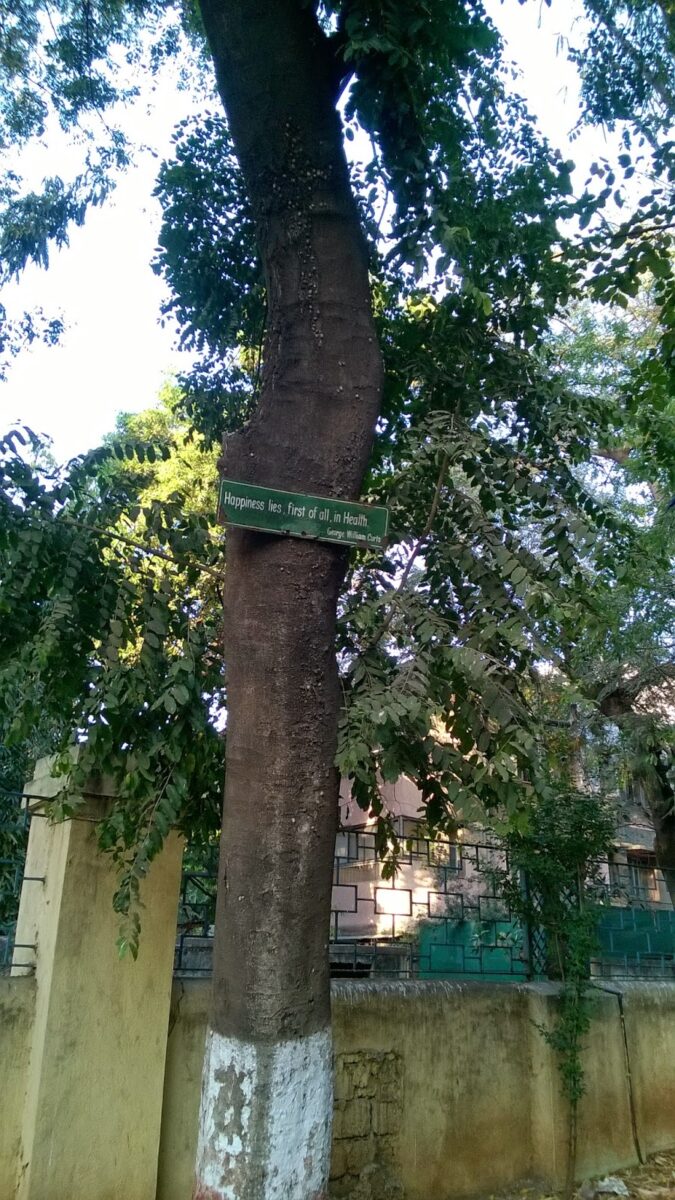 |
| Trees have motivational quotes. This one says “Happiness lies, first of all, in Health: George Willian Curtis” |
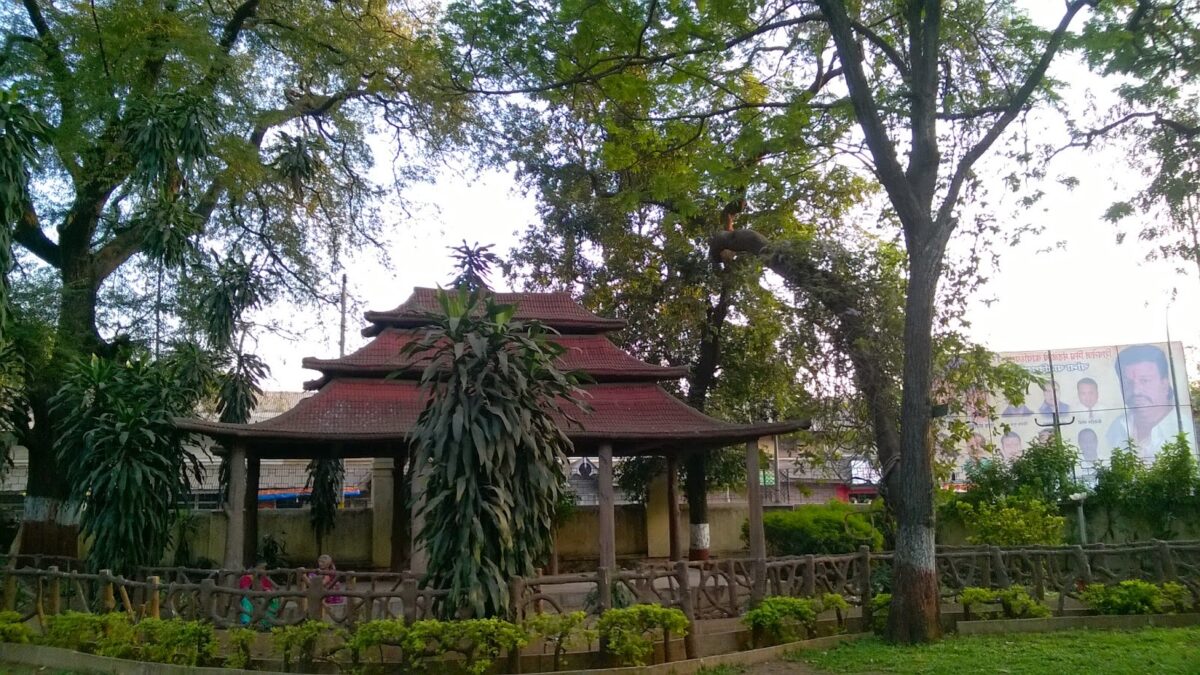 |
| Oriental style gazebo |
The park trees have boards with interesting motivational quotes – though I dont know how many people even bother to read them. I saw a lovely Soap nut tree bearing fruit as also really big Banyan and Tamarind trees. For some reason there were large Putranjeev (also called Child life tree) – but their pretty drooping green branches more than made up for downsides of the garden.
Located as it is in the hub of the commercial area, the garden is quite noisy but the kids playing there did not seem to mind it one bit! The garden could be better maintained and it has scope to be a wonderful resting spot in this very busy area of Pune.
Info:
Entry: INR 1 single entry ticket
Parking: In adjoining lanes
Rest rooms: No
Location Map here.
F is for Forest Research Garden
Its not technically a garden. Its more of a forest really. This is a government-run tree nursery located on Sopan Baug Road. It is also home to some really old and one-off trees in the city. It is a must on the places-to-visit list for tree lovers or botany students. I had visited the Forest Garden Nursery a couple of years ago on a field botany trip and even now, the place has retained its ‘Forest’ like atmosphere. The trees are really tall with not much sunshine reaching the floor. This means there are a lot of small herbs, shrubs growing there which gives you more study material. The property has some green houses where I think they conduct their research or try to germinate seeds or house the young still delicate saplings.
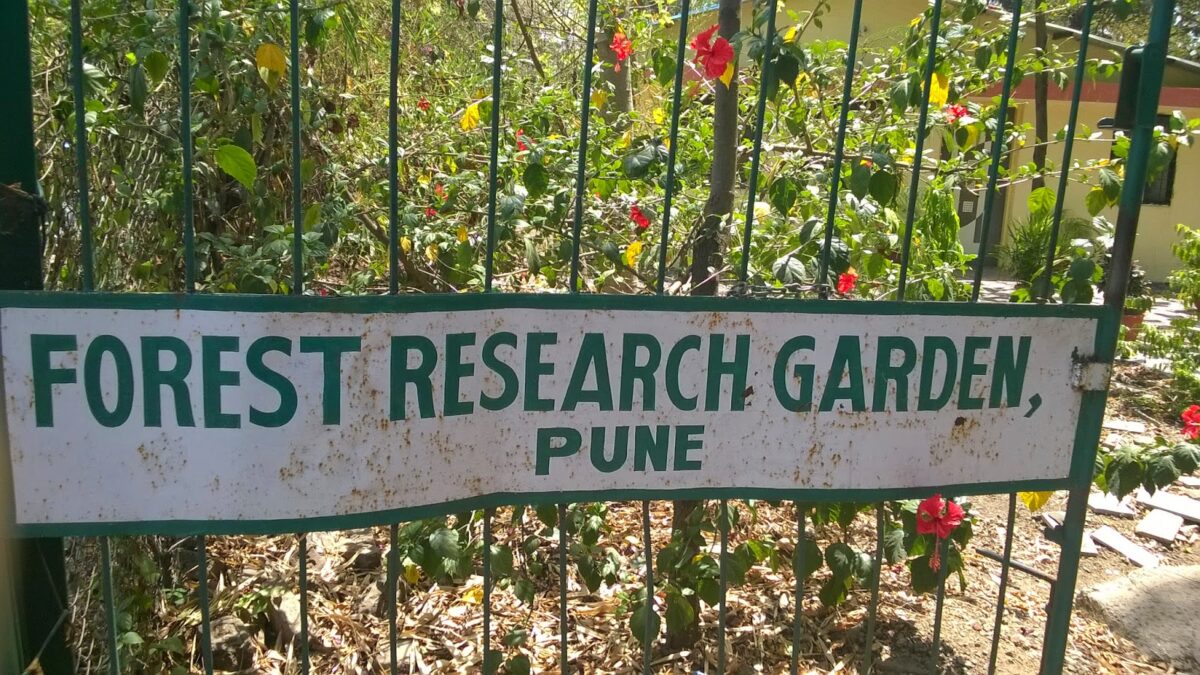
Soaring stately Ceiba pentandra trees are important residents at the Forest Garden. Experts tell us that these can be called ‘Heritage’ trees as they seem to be over 100 years old. In fact, author Shrikant Ingalhalikar has included a photograph of these trees in the Preface of his book ‘Trees of Pune‘ (page 12). The Page 232, lists some of the unique trees in this garden.
A few of the trees to be studied here are Ficus mollis, Alangium salvifolium, Sandbox tree (Hura crepitans), Buddha’s coconut (Pterygota alata), Rudraksha. The list is not complete as I would like to leave something for you to explore and enjoy.
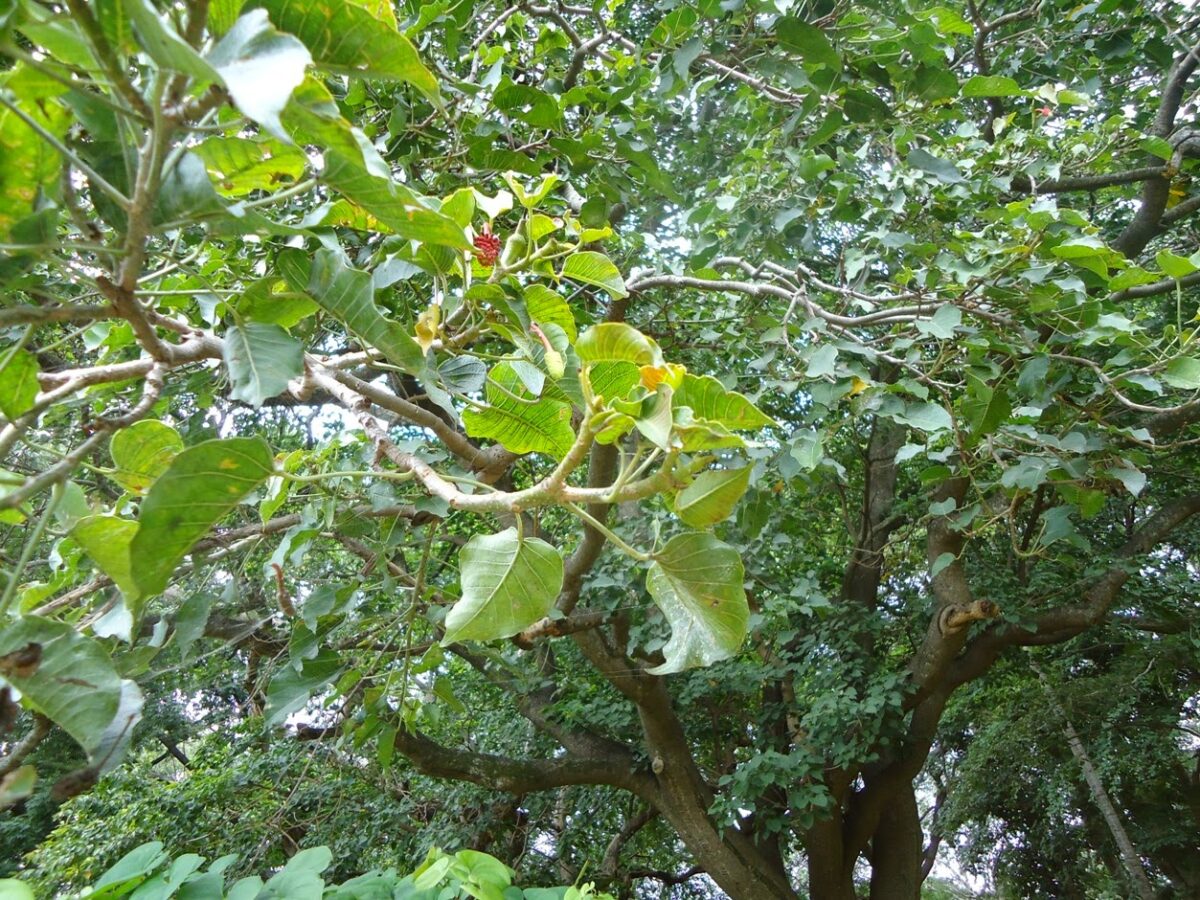 |
| Sand box tree |
Its not a place if you are looking to picnic or for kids to play or or for exercise or for general recreation.
A unique ‘garden’ indeed!
Info:
Parking: On the road and some available in the premises
Entry: Free
Timing: 10AM to 5PM Closed on Sundays and government holidays.
Location Map here.
E is for Empress Garden
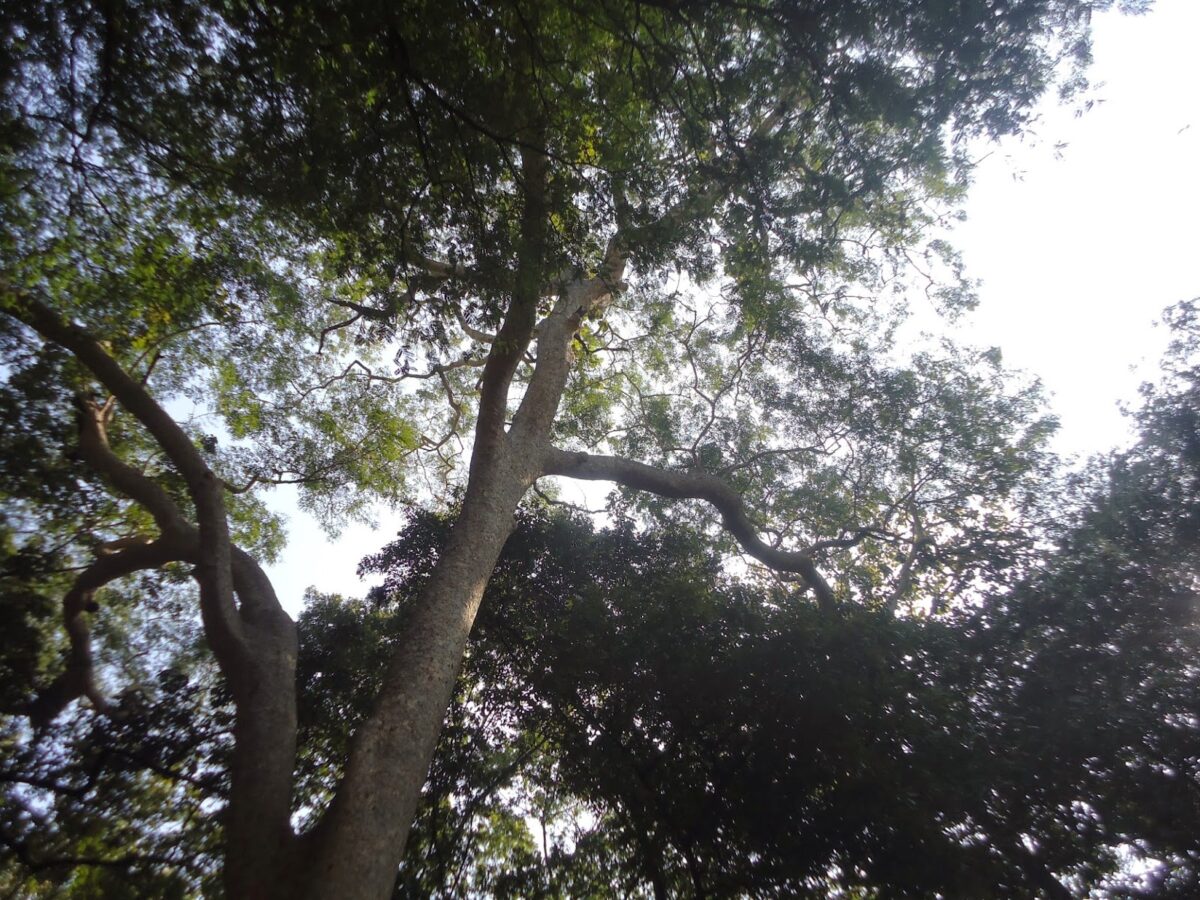
For a tree lover, the joy begins almost as soon as you reach because the imposing Kinhai and a Moha in the parking area will delay your entry. Feast your eyes and proceed for more tree wonders – made somewhat easier by the helpful labelling on the trunks. A stream of sort runs through the foliage creating a micro habitat for some water birds and flora. Empress does not have the typical manicured lawns that one expects in a garden. To be fair, its a botanical garden so don’t look for ‘accepted’ or ‘traditional’ aesthetic elements. Rather revel in the thought of sharing space with living beings that may be over 100 years old. What secrets would they be holding? If only trees could tell us…
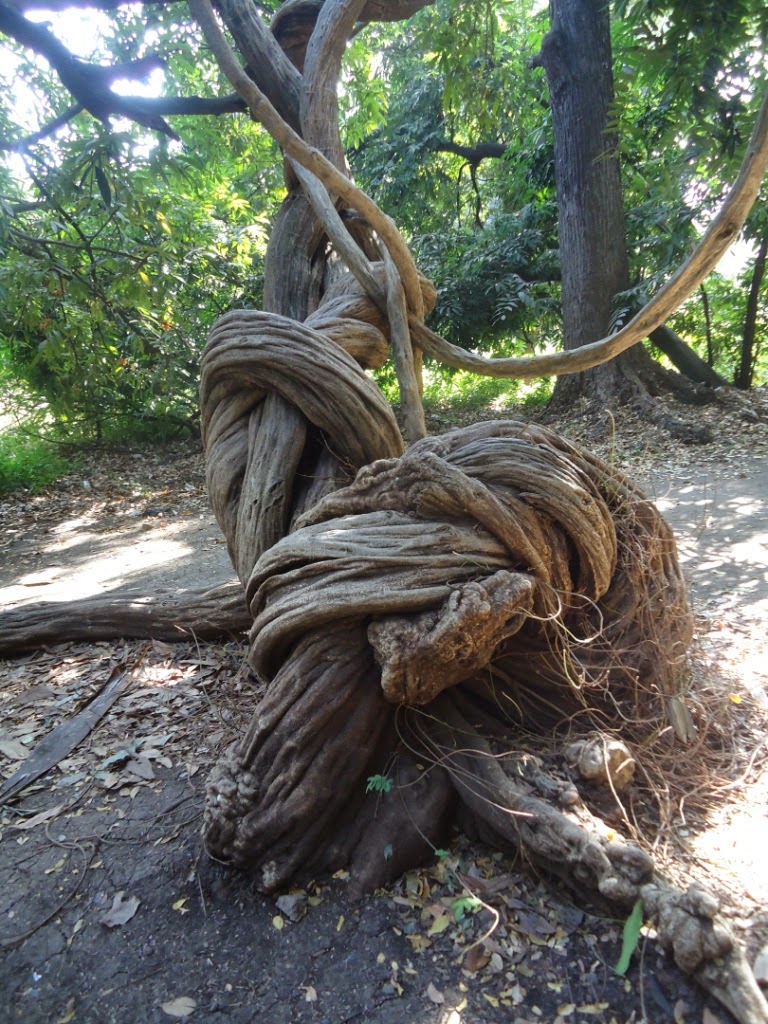 |
| Gnarled trunk of Entada rheedei (Garambi) – a giant liana |
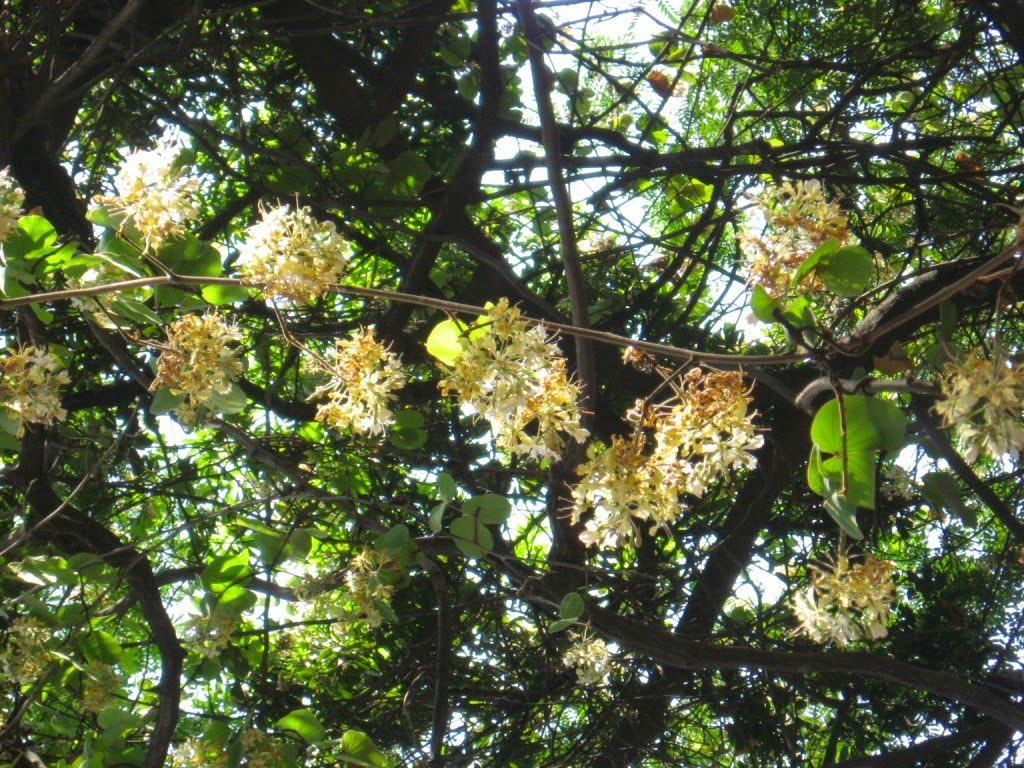 |
| The mesmerising creeper Bauhinia vahlii which loops over the tall trees and forms a floral canopy in April |
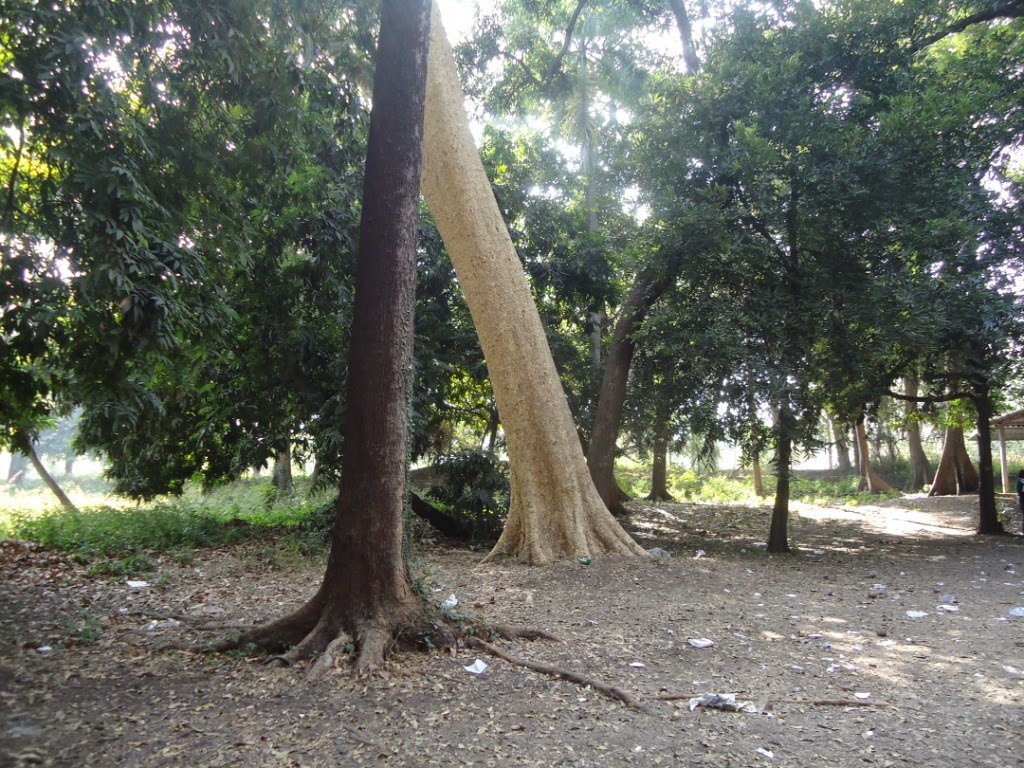 |
| The trunk of the Kinhai |
Dont miss the giant creepers that grow here – living up to their ‘giant’ status. An interesting fact about Bauhinia (shown above). The genus Bauhinia is in honour of 16th century botanists Caspar and Johann Bauhin who were twin brothers. Species in this plant group also have two lobed leaves that are identical when folded.
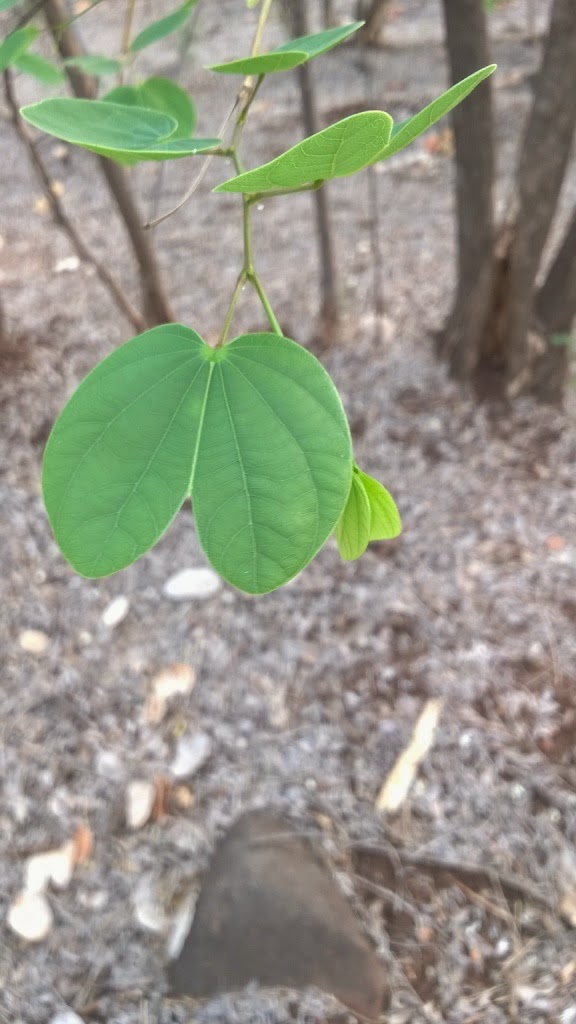 |
| Twin lobed leaf of Bauhinia |
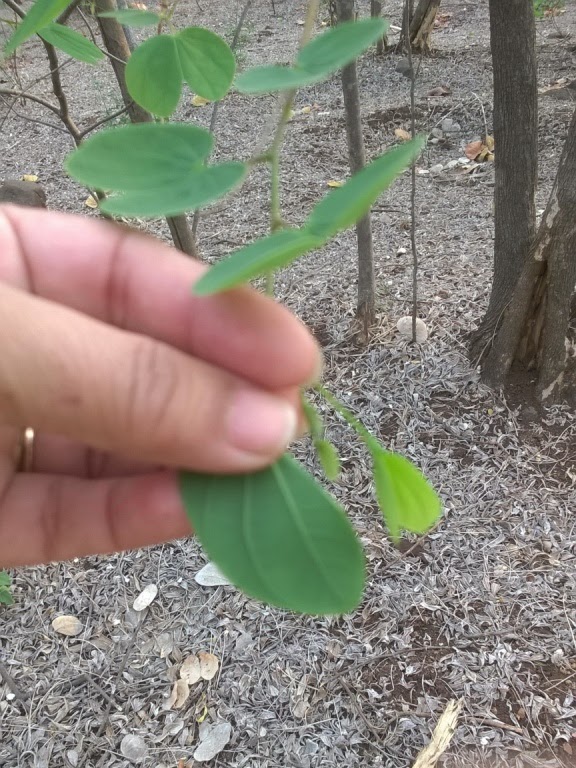 |
| Folded leaf of Bauhinia |
The garden has the usual play area for kids which seems highly popular. There is a small cottage that serves as their office and is used for small events – I have attended a book launch there. This garden is a popular site
for school picnics, family outings and of course health enthusiasts.
They have a ‘Nana Nani Park’ which is a section for grand parents (Nana
Nani mean grandfather and grandmother respectively).
The high point of this garden is its annual Buds n Bloom show held sometime in January each year. Besides the usual stalls selling gardening stuff; the gardeners at Empress create stunning displays using seasonal flowers. In addition, there is a wonderful display of Ikebana arrangements. Yet another unusual exhibit is an collage created using grains, pulses, fresh fruits and veggies. There is no limit to creativity! Local Bonsai enthusiasts display select trees during the annual Empress Buds n Bloom fest.
A heritage garden that should be on your list when visiting Pune.
Enjoy!
Info you can use:
Entry: INR 10 for 3 years and over
Timing: 930AM to 630PM All days of the week
Parking: Available and Chargeable
Drinking water: Available (quality and hygiene not checked)
USP: Unique trees and creepers; Plant nursery; Palm garden; Sale of organic veggies and fruits; Annual Buds n Bloom show; Birding; Tree spotting
Location Map here.
This post is part of the April AtoZ Blogging challenge and I am writing about gardens in Pune.
